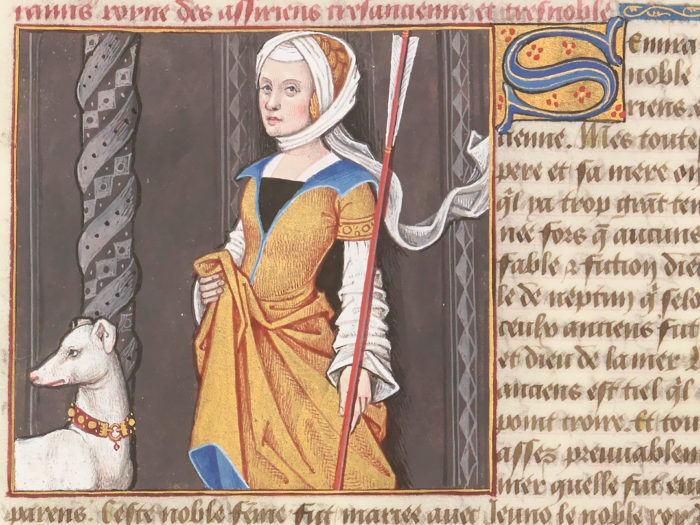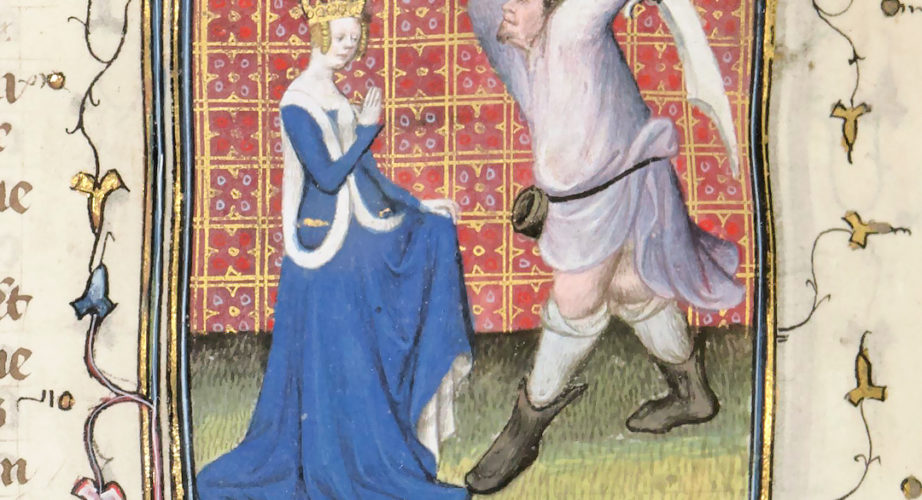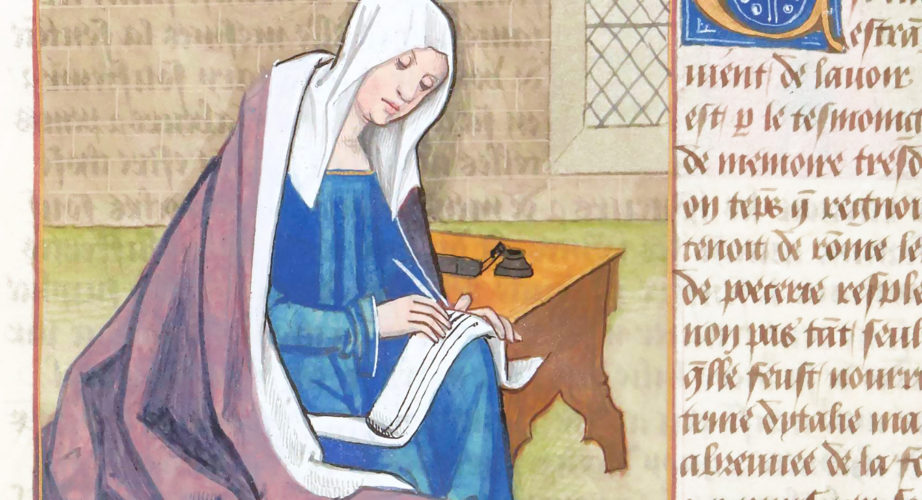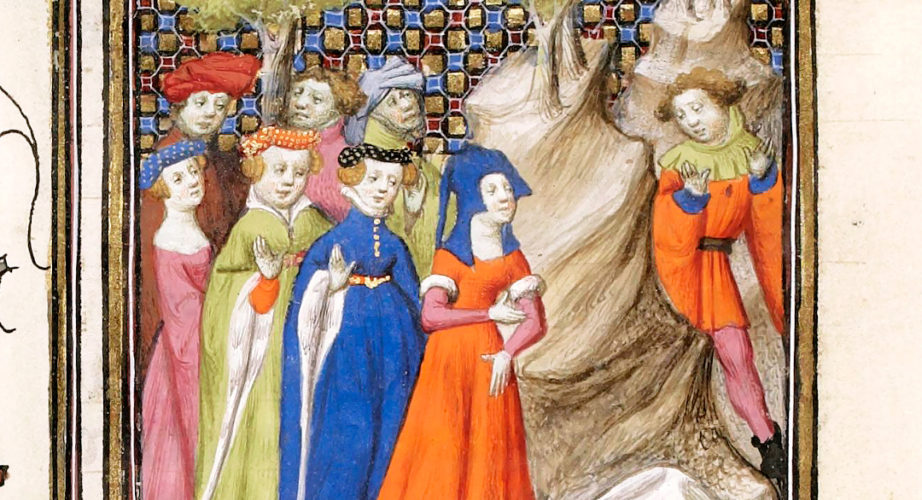Semiramis

Let’s continue our adventure through the pages of the De Mulieribus Claris: today's guest is Semiramis, the legendary queen of Assyria. The illumination above depicts Semiramis in the company of a white dog, perhaps to symbolize the prosperity that characterized her reign.
Following the death of her husband, King Ninus, Semiramis took the throne on behalf of her son. It was during this time that the walls, palaces, and famous Hanging Gardens of Babylon (one of the Seven Wonders of the ancient world) were built. Boccaccio narrates how, under her leadership, the Assyrians conquered Media, Egypt, and Ethiopia. In addition to this, the author describes the “glorious Majesty” of queen Semiramis: by not succumbing to the envy of men, she proved how women too could be fit to rule a kingdom. Boccaccio, however, admits that the queen was corrupted by lust - seemingly leading her to an incestuous relationship with her son - thus overshadowing all her great deeds and eventually tainting her fame forever.
“Semiramis”, illumination from the manuscript “De Mulieribus Claris”, decorated by Robinet Testard, ms. Français 599, f. 5v, 1488-1496, Bibliothèque Nationale de France, Département des Manuscrits, Paris.
Historically and mythologically speaking, being in a powerful position (and perhaps also a…
The time has finally come for the very first Women’s Wednesday of 2021!…
Welcome back to another Women’s Wednesday! Our weekly Mulier Clara, much like Sappho…


